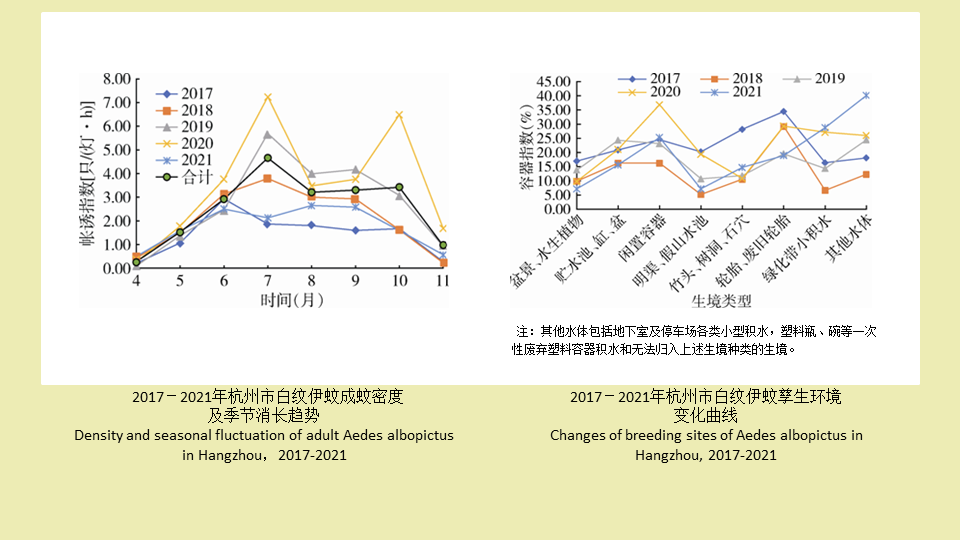 PDF(747 KB)
PDF(747 KB)


杭州市2017-2021年登革热媒介白纹伊蚊生态学监测结果分析
金彬彬, 韦凌娅, 金慧, 曹阳, 王英红, 孔庆鑫
中国媒介生物学及控制杂志 ›› 2023, Vol. 34 ›› Issue (4) : 491-496.
 PDF(747 KB)
PDF(747 KB)
 PDF(747 KB)
PDF(747 KB)
杭州市2017-2021年登革热媒介白纹伊蚊生态学监测结果分析
 ({{custom_author.role_cn}}), {{javascript:window.custom_author_cn_index++;}}
({{custom_author.role_cn}}), {{javascript:window.custom_author_cn_index++;}}An analysis of ecological surveillance results of dengue vector Aedes albopictus in Hangzhou, Zhejiang Province, China, 2017-2021
 ({{custom_author.role_en}}), {{javascript:window.custom_author_en_index++;}}
({{custom_author.role_en}}), {{javascript:window.custom_author_en_index++;}}
| {{custom_ref.label}} |
{{custom_citation.content}}
{{custom_citation.annotation}}
|
/
| 〈 |
|
〉 |